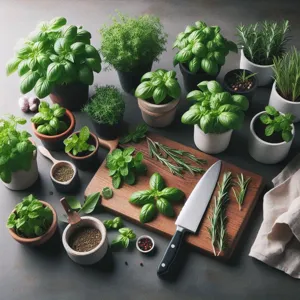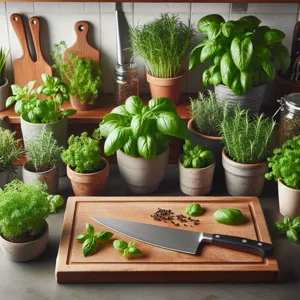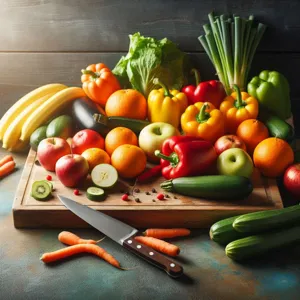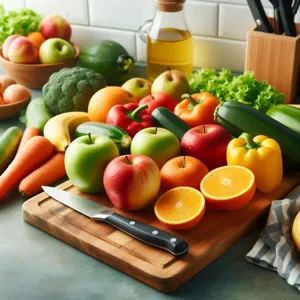As the chill of autumn creeps in and winter settles over us, there’s nothing quite like a steaming bowl of soup to soothe the soul and warm the body.
The simple act of ladling a rich, fragrant broth over fresh ingredients has a unique way of transforming a cold day into a cozy experience. In this post, we’ll explore ten delicious homemade soup recipes that are not only easy to prepare but also packed with flavors that will comfort and nourish you from the inside out. From hearty classics like creamy tomato basil and savory chicken noodle to innovative blends like roasted butternut squash and spicy lentil, each recipe is designed to bring warmth to your table and joy to your palate. So grab your favorite pot, gather your ingredients, and let’s dive into a world of comforting soups that are sure to become staples in your kitchen!
1. Introduction: The Comfort of Homemade Soup

As the crisp air of autumn sets in and the days grow shorter, there’s nothing quite like a bowl of homemade soup to provide warmth and comfort. Soup has a unique ability to evoke nostalgia, drawing us back to cherished memories of family gatherings and cozy evenings spent around the kitchen table. The gentle simmering sounds, the aromatic scents wafting through the air, and the vibrant colors bubbling in a pot all combine to create an inviting atmosphere that wraps us in a sense of security and happiness.
Homemade soup is more than just a meal; it’s a labor of love that allows for creativity and personalization. With countless ingredients and flavor combinations at your disposal, each recipe can be tailored to suit your taste preferences and dietary needs. Whether you prefer a rich, creamy bisque, a hearty vegetable medley, or a spicy chili, there’s a soup for every palate, mood, and occasion.
In this blog post, we’ll explore ten delicious homemade soup recipes that are not only easy to prepare but also brimming with nourishing ingredients. From classic favorites to innovative twists, these soups are designed to warm your soul, nourish your body, and bring a smile to your face. So grab your favorite pot, gather your ingredients, and let’s dive into the world of comforting homemade soup that is sure to fill your kitchen with delightful aromas and your heart with warmth.
2. Classic Chicken Noodle Soup
When the chill of winter settles in or a rainy day calls for comfort, nothing quite compares to a steaming bowl of Classic Chicken Noodle Soup. This timeless dish is a symphony of flavors and textures, beginning with tender morsels of chicken simmered to perfection in a rich, savory broth. The aroma wafting through your kitchen as the broth bubbles is enough to warm your heart even before you take the first sip.
To create this soul-soothing masterpiece, start by sautéing a medley of onions, carrots, and celery—often referred to as mirepoix—until they soften and release their natural sweetness. The vibrant colors of the vegetables mingle in the pot, creating a beautiful base for your soup. Next, add chicken thighs or breasts, allowing them to infuse the broth with their savory essence as they cook to juicy perfection.
Once the chicken is tender, it’s time to add the star of the show: noodles. Wide egg noodles are a classic choice, providing a delightful chew that contrasts beautifully with the tender chicken and crisp vegetables. As they cook in the broth, they absorb all the delicious flavors, expanding to create a hearty meal.
Finish off your Classic Chicken Noodle Soup with a sprinkle of fresh herbs—like parsley or thyme—to elevate the dish with a burst of freshness. Serve it hot, garnished with a slice of crusty bread or a warm biscuit, and watch as your loved ones gather around the table, eager to savor each comforting bite. With its nourishing qualities and straightforward preparation, this soup is sure to become a beloved staple in your home, warming both body and soul with every spoonful.
3. Creamy Tomato Basil Soup

### 3. Creamy Tomato Basil Soup
Nothing embodies comfort quite like a steaming bowl of Creamy Tomato Basil Soup. This classic recipe combines the vibrant sweetness of ripe tomatoes with the fresh, aromatic notes of basil, creating a rich and satisfying dish that is both nourishing and indulgent.
Start by sautéing chopped onions and garlic in a splash of olive oil, allowing their fragrant aroma to fill your kitchen. As they soften, add in ripe, diced tomatoes—preferably vine-ripened for their superior flavor. A sprinkle of salt will help draw out their natural sweetness, while a touch of sugar can balance any acidity. For a depth of flavor, toss in a bay leaf and a pinch of red pepper flakes to awaken your taste buds.
As the tomatoes simmer, you can transform this soup into a creamy delight. Blend in a generous splash of heavy cream or a dollop of crème fraîche for a velvety texture that coats your palate with warmth. If you prefer a lighter option, a splash of coconut milk or a blend of cashews and water can yield a similarly luscious result while keeping it dairy-free.
The final flourish comes from a handful of fresh basil leaves, torn just before adding them to the pot, allowing their vibrant green color and intense fragrance to infuse the soup. Simmer for a few more minutes, letting the flavors meld together, then remove the bay leaf and blend until smooth.
Serve your Creamy Tomato Basil Soup hot, garnished with a drizzle of olive oil, a sprinkle of freshly cracked black pepper, and a few more basil leaves for that picturesque finish. Pair it with a crusty piece of garlic bread or a grilled cheese sandwich for the ultimate soul-warming meal. This delightful soup is not just a dish; it’s a hug in a bowl, perfect for cozy nights in or when you need a little extra comfort. Enjoy each spoonful as it warms both your body and your spirit!
4. Hearty Vegetable Minestrone
Hearty Vegetable Minestrone is a vibrant symphony of flavors and textures that encapsulates the essence of comfort food. This rustic Italian soup is brimming with a medley of seasonal vegetables, tender beans, and wholesome pasta, all simmered in a rich, savory broth.
Imagine a bubbling pot filled with colorful carrots, zucchini, and green beans, their natural sweetness enhanced by the aromatic notes of garlic and onion. As the vegetables soften, you can add in fresh tomatoes, bursting with juiciness, to create a robust base. The addition of cannellini beans not only adds a creamy texture but also packs a protein punch, making this soup as filling as it is nutritious.
A handful of small pasta shapes, like ditalini or elbow macaroni, adds the perfect heartiness, soaking up the flavors of the broth. For that extra touch of authenticity, a sprinkle of Italian herbs—such as basil and oregano—infuses the dish with a fragrant aroma that will have your family flocking to the kitchen.
As it simmers, the wonderful mingling of flavors creates a dish that is not just a meal, but a warm embrace in a bowl. Serve your Hearty Vegetable Minestrone with a drizzle of good-quality olive oil and a generous sprinkle of freshly grated Parmesan cheese for a delightful finish. This soup is perfect for chilly evenings or whenever you need a comforting reminder of home, nourishing your body and soul with each delightful spoonful.
5. Savory Beef Barley Soup

When the chilly winds of winter sweep in and the days grow shorter, there’s nothing quite like a warm bowl of Savory Beef Barley Soup to restore your spirits and warm your soul. This hearty dish is a comforting classic that combines tender chunks of beef, earthy barley, and a medley of flavorful vegetables, creating a symphony of textures and tastes in every spoonful.
Imagine the rich aroma of beef simmering slowly in a pot, mingling with the fragrant notes of garlic and onions. As the beef browns to perfection, you add in carrots and celery, allowing them to soften and release their natural sweetness. Then comes the star of the show: pearl barley. This nutty grain not only adds body to the soup but also brings a delightful chewiness that perfectly complements the melt-in-your-mouth beef.
The secret to an exceptional Savory Beef Barley Soup lies in the broth. A robust beef stock, perhaps enhanced with a splash of red wine, forms the foundation of this dish, infusing it with deep, savory flavors. As the soup simmers gently, the barley absorbs the broth, thickening the mixture and transforming it into a sumptuous, satisfying meal.
To elevate the experience, finish your soup with a sprinkle of fresh herbs, such as thyme or parsley, which add a burst of freshness and color. Serve it alongside warm, crusty bread, and you’ll have a meal that not only nourishes the body but also soothes the soul. Whether shared with family on a cold evening or savored alone as a moment of self-care, this Savory Beef Barley Soup is sure to become a cherished recipe in your culinary repertoire.
6. Creamy Potato Leek Soup
Creamy Potato Leek Soup A Velvety Hug in a Bowl
As the chilly winds swirl outside, there’s nothing quite like a steaming bowl of creamy potato leek soup to bring warmth and comfort to your day. This luscious soup is a delightful blend of buttery leeks and hearty potatoes, simmered to perfection and finished with a splash of cream for a rich, velvety texture.
To start, thinly sliced leeks are gently sautéed in butter until they become tender and fragrant, releasing their sweet, onion-like aroma. The addition of diced potatoes brings a satisfying starchiness that thickens the soup beautifully as it cooks. As the ingredients simmer together in a rich broth, they meld into a harmonious blend of flavors that will have your taste buds dancing with joy.
Once the potatoes are tender, reach for your immersion blender or a countertop blender, and watch as the soup transforms into a silky-smooth delight. For an added touch of luxury, swirl in heavy cream just before serving, creating a beautiful contrast with the pale green hue of the leeks.
To elevate this heavenly soup, consider garnishing it with a sprinkle of freshly chopped chives or a drizzle of truffle oil for an extra touch of elegance. Serve it alongside a crusty loaf of bread, perfect for dipping, and let the comforting aroma fill your kitchen as you savor each spoonful.
Whether enjoyed as a light lunch or a cozy dinner, creamy potato leek soup is not only a feast for the senses but also a heartwarming reminder that sometimes, the simplest ingredients can create the most soul-nourishing dishes. So grab your pot and apron, and get ready to indulge in a bowl of pure comfort!
7. Spicy Black Bean Soup
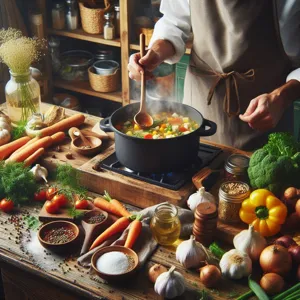
Spicy Black Bean Soup is a delightful symphony of flavors that warms both the body and the soul. This robust dish begins with a base of tender black beans, simmered to perfection until they’re soft and creamy. The magic unfolds as you add a medley of aromatic spices—cumin, coriander, and a hint of smoked paprika—that create a depth of flavor that dances on the palate.
To start, sauté onions, garlic, and bell peppers in a splash of olive oil until they’re fragrant and golden. Their sweetness balances the heat from freshly chopped jalapeños, which add a delightful kick to the soup. As you stir in the beans and a rich vegetable broth, the ingredients meld together, creating a hearty texture that’s satisfying with each spoonful.
For an extra burst of flavor, consider adding a splash of lime juice just before serving. This brightens the dish and enhances the overall experience. Top each bowl with a dollop of creamy avocado or a sprinkle of fresh cilantro, allowing the coolness to contrast perfectly with the spice of the soup.
Serve it alongside warm, crusty bread or a side of tortilla chips for dipping, and you have a meal that’s not only delicious but also deeply comforting. Whether you’re seeking warmth on a chilly day or simply craving a dish that packs a flavorful punch, Spicy Black Bean Soup is sure to become a staple in your kitchen. Enjoy it as a filling lunch, a light dinner, or even as a make-ahead meal that will taste just as delightful when reheated.
8. French Onion Soup with Gruyère
French Onion Soup with Gruyère is a timeless classic that embodies comfort in a bowl. Imagine a rich, golden broth that has been simmered to perfection, infused with the deep, sweet flavor of caramelized onions. The aroma alone is enough to transport you to a bustling Parisian bistro, where the warmth of the soup mingles with the clinking of wine glasses and soft chatter.
To create this culinary masterpiece, start by slowly caramelizing thinly sliced onions in a generous amount of butter, allowing them to become tender and deeply browned—this process can take up to an hour, but it’s worth every minute. The onions’ natural sugars will develop into a sweet, savory base that serves as the heart of the soup. Once your onions are perfectly caramelized, deglaze the pot with a splash of dry white wine or sherry, scraping up those flavorful bits stuck to the bottom.
Next, add beef broth (or a rich vegetable broth for a vegetarian option) and let the mixture simmer to meld the flavors beautifully. To elevate the experience, season with thyme, bay leaves, and a hint of garlic, allowing the fragrant herbs to steep into the broth.
The pièce de résistance, of course, is the Gruyère cheese. As the soup nears completion, ladle the steaming broth into oven-safe bowls, top each with a generous slice of crusty baguette, and then heap on the grated Gruyère. Pop them under the broiler until the cheese bubbles and turns a glorious golden brown, creating a gooey, irresistible topping that adds a delightful texture contrast to the silky soup beneath.
Serve your French Onion Soup with Gruyère hot and bubbling, garnished with a sprinkle of fresh chives or parsley for a touch of color. As you take your first spoonful, the combination of the sweet onions, savory broth, and melted cheese will envelop you in a cozy embrace, making it the perfect dish to warm your soul on a chilly day. Whether enjoyed as an appetizer or a main course, this soup is bound to become a cherished staple in your kitchen, inviting friends and family to gather around and savor the simple joys of homemade cooking.
9. Thai Coconut Curry Soup
### 9. Thai Coconut Curry Soup
Transport your taste buds to the vibrant streets of Thailand with a steaming bowl of Thai Coconut Curry Soup. This soul-warming dish combines the rich, creamy goodness of coconut milk with the aromatic spices typical of Thai cuisine, creating a harmonious blend that is both comforting and invigorating.
Start by sautéing a medley of fragrant ingredients—ginger, garlic, and shallots—until they release their enticing aromas. Add in a generous spoonful of red curry paste, allowing it to bloom and fill your kitchen with its spicy, sweet scent. Next, pour in a can of full-fat coconut milk, stirring until it melds seamlessly with the spices, creating a luscious broth that promises to envelop you in warmth with every spoonful.
For a burst of freshness, toss in vibrant vegetables like bell peppers, carrots, and snap peas, letting them soak up the soup’s flavor as they cook to tender perfection. You can also enhance the nutritional value by adding protein—think tender chunks of chicken, shrimp, or even tofu for a vegetarian option. As the soup simmers, the ingredients meld together beautifully, creating a colorful and inviting dish that is as pleasing to the eye as it is to the palate.
Finish off your Thai Coconut Curry Soup with a sprinkle of fresh cilantro and a squeeze of lime juice to elevate the flavors. Served hot, this soup not only warms the body but also nourishes the soul, making it the perfect remedy for chilly evenings or a delightful meal any time of the year. Pair it with steamed jasmine rice or crusty bread, and you have a meal that is sure to impress family and friends alike. Enjoy the comforting embrace of this delicious homemade soup, and let its vibrant flavors transport you to a tropical paradise.
10. Butternut Squash and Apple Soup
As the leaves turn golden and the air grows crisp, there’s nothing quite like a bowl of Butternut Squash and Apple Soup to embody the spirit of fall. This velvety, vibrant concoction marries the sweet, nutty flavor of roasted butternut squash with the crisp, tart essence of fresh apples, creating a harmonious blend that warms the soul with every spoonful.
To start, the butternut squash is peeled, cubed, and roasted until caramelized, enhancing its natural sweetness and depth of flavor. Meanwhile, a medley of aromatic onions and garlic is gently sautéed in butter, infusing the base of the soup with a savory aroma that beckons from the kitchen. As the butternut squash and a selection of diced apples—think Granny Smith for a tangy kick—join the sautéed mixture, a sprinkle of cinnamon and nutmeg adds warmth and complexity, evoking the cozy feelings of the season.
Once everything is blended together and simmered to perfection, you’ll find that blending the soup creates an incredibly smooth texture. A splash of vegetable broth or apple cider helps to achieve the desired consistency, allowing the flavors to meld beautifully. Finish with a drizzle of cream or a dollop of Greek yogurt for a touch of richness, and garnish with toasted pumpkin seeds or a sprinkle of fresh herbs for added texture and color.
Served warm with crusty bread or a light salad, this Butternut Squash and Apple Soup is not just a meal; it’s a comforting embrace in a bowl. Perfect for chilly evenings or as a centerpiece for gatherings, it’s sure to become a beloved staple in your autumn repertoire. Enjoy each savory sip as it transports you to a cozy autumn afternoon, surrounded by the beauty of nature’s changing palette.
11. Tomato and Roasted Red Pepper Soup
### Tomato and Roasted Red Pepper Soup
There’s something undeniably comforting about a steaming bowl of tomato soup, and when you elevate it with the smoky sweetness of roasted red peppers, you create a dish that’s both nostalgic and exciting. This Tomato and Roasted Red Pepper Soup is the perfect blend of flavors, making it an ideal choice for a chilly evening or a cozy lunch.
To start, ripe, juicy tomatoes are essential. Choose the freshest tomatoes you can find, as their bright, tangy sweetness will shine through in the final dish. Pair these with vibrant red bell peppers, which are roasted until their skins are charred and blistered, enhancing their natural sweetness and adding a delightful depth of flavor. The roasting process transforms these peppers, creating a rich, smoky undertone that perfectly complements the acidity of the tomatoes.
As you prepare the soup, sauté onions and garlic in olive oil until they become fragrant and translucent, infusing the base with layers of flavor. Once your veggies are ready, add the diced tomatoes and roasted red peppers into the pot, along with vegetable broth to create a luscious, velvety texture. Season with fresh basil, a pinch of salt, and a hint of black pepper to elevate the taste further.
Simmer the mixture until everything melds beautifully, then blend it until smooth, creating a luxurious consistency that glides over your tongue. For an extra touch of indulgence, consider stirring in a splash of cream or a dollop of crème fraîche before serving, which adds a rich, silky finish to the soup.
Serve this delightful concoction in warm bowls, garnished with fresh basil leaves and a drizzle of olive oil for a touch of elegance. Pair it with a crusty piece of bread or a grilled cheese sandwich for the ultimate comfort meal. Each spoonful of this Tomato and Roasted Red Pepper Soup is sure to warm your soul and bring a smile to your face, making it a cherished addition to your homemade soup repertoire.
12. Tips for Making the Perfect Soup
When it comes to creating the perfect soup, a few key tips can elevate your culinary experience from ordinary to extraordinary. First and foremost, always start with a robust base. Whether you opt for a homemade stock or a store-bought version, the quality of your broth sets the foundation for flavor. For deeper taste, consider roasting your vegetables before adding them to the pot; this caramelization enhances their natural sweetness and adds a delightful complexity.
Next, embrace the power of herbs and spices. Fresh herbs like thyme, rosemary, or basil can infuse your soup with vibrant flavor, while spices such as cumin, paprika, or bay leaves can add warmth and depth. Remember to add these aromatics at different stages of cooking—some should be added early on to develop their flavors, while others are best added just before serving to preserve their freshness.
Don’t forget the texture! A perfectly balanced soup often combines both smooth and chunky elements. For creamy soups, blend a portion of the mixture to create a velvety consistency, then stir in whole vegetables or grains for added bite. If you’re making a broth-based soup, consider incorporating grains like rice, quinoa, or barley, which not only add heartiness but also absorb the flavors beautifully.
Finally, taste as you go. Adjusting seasoning and flavors throughout the cooking process ensures that your soup will be perfectly balanced. A squeeze of fresh lemon juice or a dash of vinegar right before serving can brighten the dish and enhance the overall flavor profile. With these tips in hand, you’ll be well on your way to crafting a delicious, soul-warming soup that will become a staple in your kitchen. Happy cooking!
13. Storing and Freezing Soup for Later
Storing and freezing soup for later is an excellent way to ensure that you always have a comforting meal on hand, ready to warm your soul whenever the mood strikes. Properly storing soup not only preserves its flavor and nutrients but also enhances your meal prep efficiency. Here’s how to do it right.
**Cooling Down**: Before you store your soup, allow it to cool to room temperature. This is crucial, as placing hot soup directly into the refrigerator or freezer can raise the temperature inside, potentially compromising the safety of other foods. A good rule of thumb is to let the soup cool for about 30 minutes. If you’re in a hurry, you can speed up the process by transferring it to a shallow container or using an ice bath.
**Choosing Containers**: When it comes to storage containers, opt for airtight, freezer-safe containers or heavy-duty freezer bags. Glass containers are great for long-term storage, but make sure they are labeled as freezer-safe to prevent cracking. If you go with bags, squeeze out as much air as possible before sealing to avoid freezer burn.
**Portion Control**: Consider portioning your soup into individual servings. This makes it easier to grab a quick meal on busy days or when unexpected guests drop by. Plus, it reduces the likelihood of thawing more than you need, minimizing waste.
**Labeling**: Don’t forget to label your containers with the soup type and the date it was made. This simple step will help you keep track of what you have on hand and ensure you use older soups first.
**Freezing**: When you’re ready to freeze, place your containers in the freezer in a way that allows air to circulate around them. Soups can generally be frozen for about 3-6 months, but for the best flavor and texture, aim to use them within the first few months.
**Thawing and Reheating**: When it’s time to enjoy your soup, thaw it in the refrigerator overnight or use the defrost setting on your microwave. For reheating, do so gently on the stove over low heat, stirring occasionally. If the soup appears too thick, you can add a splash of broth or water to achieve your desired consistency.
By mastering the art of storing and freezing soup, you’ll always have a delightful bowl waiting for you, ready to nourish your body and soul. Enjoy the convenience of homemade soup at your fingertips, and never miss out on that comforting hug in a bowl!
14. Pairing Soups with Delicious Sides
When it comes to enjoying a hearty bowl of soup, the experience can be elevated to new heights by thoughtfully pairing it with delicious sides. The right accompaniments not only enhance the flavors of your soup but also provide a delightful contrast in texture and taste, making your meal more satisfying and complete.
For a classic tomato basil soup, consider serving it alongside a warm, crusty grilled cheese sandwich. The gooey, melted cheese perfectly complements the tangy sweetness of the tomato, while the crispy exterior of the sandwich adds a comforting crunch. A sprinkle of fresh basil on top of the soup can tie the dish together beautifully, showcasing the vibrant flavors.
If you’re savoring a rich and creamy potato leek soup, a side of buttery, flaky biscuits can be a match made in culinary heaven. The soft, pillowy texture of the biscuits dips seamlessly into the soup, soaking up its comforting warmth. For added flair, try serving them with a dollop of herb-infused butter or a sprinkle of sharp cheddar for a flavor boost.
For those craving something a bit more adventurous, consider a spicy butternut squash soup paired with a refreshing side salad tossed with citrus vinaigrette. The zesty dressing cuts through the soup’s sweetness, while the crunchy greens add a refreshing bite, balancing out the meal perfectly.
And let’s not forget about the timeless pairing of French onion soup with a side of garlic bread. The crusty, toasted bread topped with melted cheese serves as the ideal vessel for soaking up the rich, savory broth, while also offering a satisfying crunch with each bite.
Experimenting with different sides can transform your soup night into a gourmet experience. Whether you opt for crisp vegetable sticks with a tangy dip, a hearty slice of focaccia, or even a simple bowl of olives, the key is to find combinations that excite your taste buds and complement the soup’s unique flavors. So go ahead, get creative in the kitchen, and discover the delightful world of soup pairings that will warm not only your soul but also your dining table!
15. Conclusion: Finding Joy in Homemade Cooking
As we wrap up this journey through our collection of 10 delicious homemade soup recipes, it’s essential to reflect on the deeper joys that cooking can bring to our lives. Homemade cooking is not just about nourishing our bodies; it’s an art that nurtures our souls and fosters connections with those we cherish. Each simmering pot of soup is a canvas, awaiting the vibrant hues of fresh ingredients, the aromatic whispers of herbs, and the subtle complexities that come from time spent stirring, tasting, and perfecting.
In a world that often moves too fast, setting aside time to create something from scratch can be an incredible source of joy and satisfaction. The process of chopping vegetables, sautéing onions, and allowing flavors to meld together is therapeutic—an act of mindfulness that invites us to slow down and savor the moment. Whether it’s a hearty chicken noodle soup brimming with nostalgia or a spicy lentil concoction that warms both heart and home, each recipe tells a story, evokes memories, and brings loved ones together around the table.
Moreover, sharing a meal made with love can strengthen bonds and create lasting memories. So, as you enjoy these recipes, remember that the true magic of homemade cooking lies not just in the flavors, but in the laughter shared, the stories exchanged, and the warmth that fills your kitchen and your heart. Embrace the joy of cooking, experiment with your creations, and relish the comfort that a bowl of homemade soup can provide. Here’s to many more cozy evenings spent in the kitchen, crafting delicious soups that warm both body and soul!


























